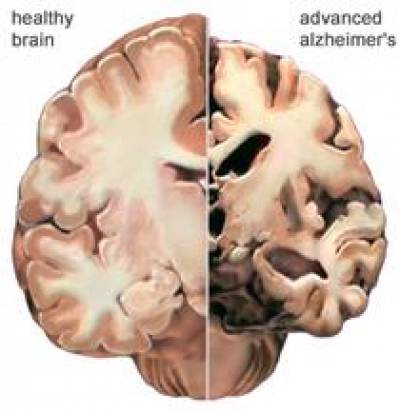Increased Risk

As the life expectancy of individuals with Down syndrome (DS) has increased over the last few decades, it has become apparent that DS is associated with an increased risk of developing Alzheimer's disease (AD).
At the age of 60 it has been suggested that 36%-50% of individuals with DS are affected by AD while in the general population the prevalence is much lower, with around 0.1% of individuals being affected at age 60.
We do not yet know if the Alzheimer's-like pathology and clinical presentation we often see in older people with Down syndrome is Alzheimer's disease or Alzheimer's-like syndrome sharing several symptoms/features with Alzheimer's disease.
Reason for Increased Risk
The full explanation for this increased risk of AD is still unknown, although it is thought that the over expression of genes on chromosome 21 due to their presence in 3 copies, rather than the usual 2, is likely to contribute substantially.
In particular, variations in the the amyloid precursor protein (APP) gene, which is on chromosome 21, have been associated with familial early-onset AD in the general population, and so is one of the likely contributory factors to the increased risk.
However, AD is a complex disease: other genes located on chromosome 21 (such as superoxide dismutase 1, SOD1) and interactions between genes both on chromosome 21 and on other chromosomes have been implicated in increasing risk for AD (such as the presenilin genes) too. Epigenetic factors and the environment will also likely contribute to AD risk.
Amyloid Plaques
Individuals diagnosed with AD show characteristic neuropathological features, including the build-up of amyloid plaques.
The amyloid precursor protein contributes to the synthesis of amyloid-beta (an amyloid fragment) found in these plaques, supporting the important role of APP in the development of AD.
The build-up of these amyloid plaques has been associated with disrupted sleep patterns in mice, with these sleep abnormalities starting early in the course of plaque development. Disrupted sleep in humans may also predict the onset of AD.
Autopsy studies of people with DS suggest that these amyloid plaques are present in the brains of all individuals by the age of 30, regardless of whether these people have had a diagnosis of AD or not. Significant cognitive decline is observed in just a third of individuals with DS aged 30 and over, meaning the amyloid plaque build-up has no significant cognitive effect on two-thirds of people with Down syndrome at the age of 30.
These findings suggest a large amount of individual variability in the cognitive profiles of individuals with DS, and this variability is likely due to genetic and environmental differences between individuals.
 Close
Close

